Fluorophores for the Red (640 nm) Laser
Overview
Bio-Rad has seven fluorophores excitable by the red (640 nm) laser allowing an extra four colors to be added to any conventional flow cytometry panel and six colors to any spectral flow cytometry panel. Table 1 below shows the properties of these fluorophores.
Table 1: Fluorophores excited by the red (640 nm) laser.
Fluorophore |
Ex Max (nm) |
Em Max (nm) |
Brightness |
ZE5 Filter |
Similar |
|---|---|---|---|---|---|
|
APC |
650 |
661 |
4 |
670/30 |
A647, Cy5, DyLight 650, SBR670 |
|
A647 |
650 |
665 |
4 |
670/30 |
APC, Cy5, DyLight 650, SBR670 |
|
SBR670 |
650 |
666 |
4 |
670/30 |
APCA647, Cy5, DyLight 650 |
|
SBR715 |
638 |
712 |
4 |
720/60 |
A700 |
|
A700 |
702 |
723 |
2 |
720/60 |
SBR715 |
|
SBR775 |
653 |
778 |
3 |
775/50 |
APC-Cy7, APC-eFluor 780 |
|
SBR815 |
654 |
811 |
3 |
800LP |
APC-Fire 810 |
APC (ex 650/em 661)
Allophycocyanin (APC) is a fluorescent protein found in blue-green algae. It is a bright fluorophore with similar spectral characteristics to A647, therefore they can’t be used in the same panel.

A647 (ex 650/em 665)
Alexa Fluor 647 is a bright photostable fluorophore suitable for flow cytometry and fluorescence microscopy. Due to similar excitation and emission characteristics to APC, they cannot be used together.
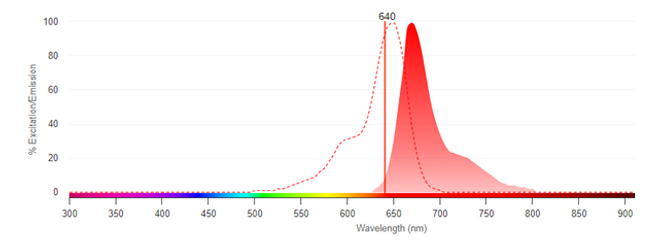
StarBright Red 670 (SBR670) Dye (ex 650/em 666)
StarBrightTM Red 670 Dye is part of the StarBright Dye range, a new range of bright, fluorescent dyes specially developed for flow cytometry. This bright dye is excitable by the red 640 nm laser, emits at 666 nm, and is able to be used in multicolor panels in spectral flow cytometry with APC.
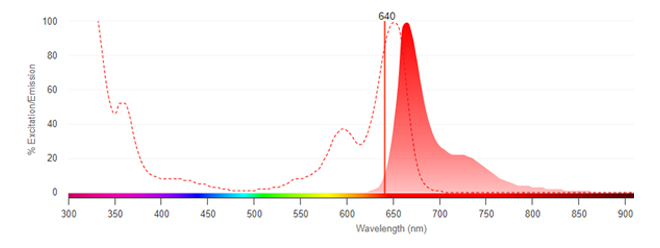
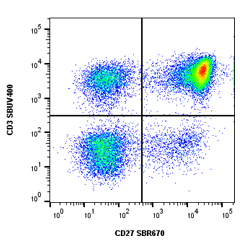
Fig. 1. SBR670 staining. Human peripheral blood stained with CD27SBR670 (MCA755SBR670) and CD3SBUV400 (MCA463SBUV400) after incubation with 10% human serum. Data acquired on the ZE5 Cell Analyzer.
StarBright Red 715 (SBR715) Dye (ex 638/em 712)
SBR715 is a very bright 640 nm laser excitable dye belonging to the StarBright Dye range emitting at 712 nm. It has a unique spectrum, with a similarity score of 0.83 compared to A700 and on the ZE5 Cell Analyzer has been found to be over 10x brighter than A700.
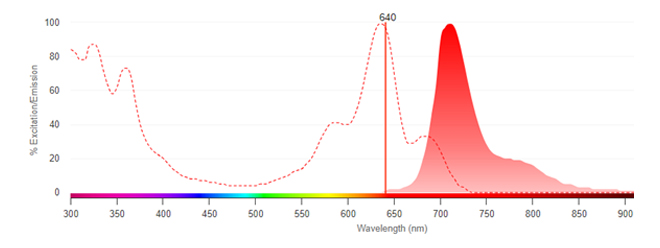
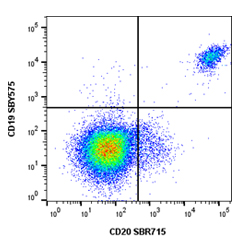
Fig. 2. SBR715 staining. Human peripheral blood stained with CD20SBR715 (MCA1710SBR715) and CD19SBY575 (MCA1940SBY575) after incubation with 10% human serum. Data acquired on the ZE5 Cell Analyzer.
A700 (ex 702/em 723)
Alexa Fluor 700 is a relatively dim, far red fluorophore that gives extra multicolor panel options on the 640 nm laser.
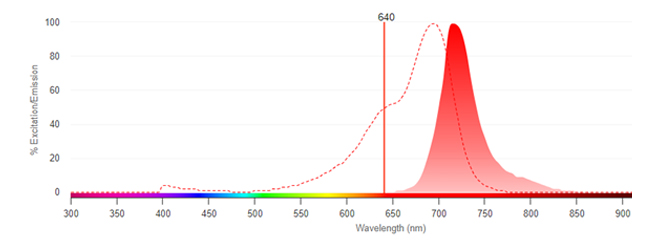
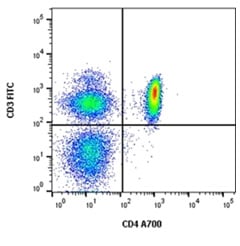
Fig. 3. Alexa Fluor 700 staining. Human peripheral blood stained with CD4 (MCA1267A700) and CD3 (MCA463F) after incubation with 10% human serum, to detect helper T cells. Data acquired on the ZE5 Cell Analyzer.
StarBright Red 775 (SBR775) Dye (ex 653/em 778)
SBR775 is a bright 640 nm laser excitable dye belonging to the StarBright Dye range emitting at 778 nm with a unique excitation and emission profile compared to other dyes. Although there is some excitation by the 355 and 405 nm lasers SBR775 can be stably fixed in PFA and alcohol-based fixatives with no loss of signal and is therefore an ideal replacement for APC tandem dyes.
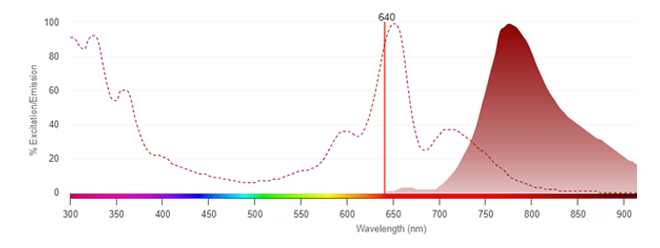
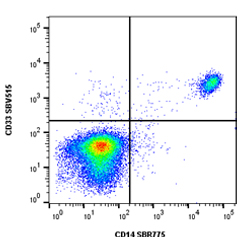
Fig. 4. SBR775 staining. Human peripheral blood stained with CD14SBR775 (MCA1568SBR775) and CD33SBV515 (MCA1271SBV515) after incubation with 10% human serum. Data acquired on the ZE5 Cell Analyzer.
StarBright Red 815 (SBR815) Dye (ex 654/em 811)
SBR815 is another bright 640 nm laser excitable dye belonging to the StarBright Dye range with a very long Stokes shift, emitting at 811 nm, and a unique spectral profile compared to other dyes. Fixable in PFA and alcohol-based fixatives with no loss of signal, this can be an ideal replacement for APC tandem dyes.
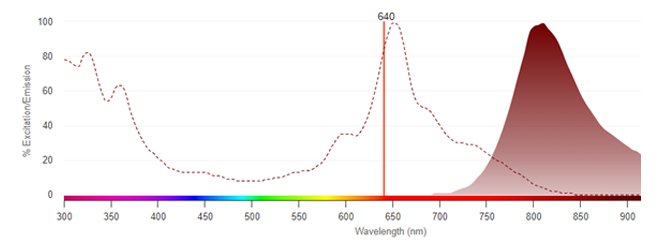
Fluorophores by Laser
Bio-Rad stocks a selection of different fluorophores that are usable with a range of lasers. Details of which fluorophores are best suited to which lasers can be found on our Fluorophores for Flow Cytometry page.
For more information about fluorophores and immunophenotyping, refer to our flow cytometry resources below.





